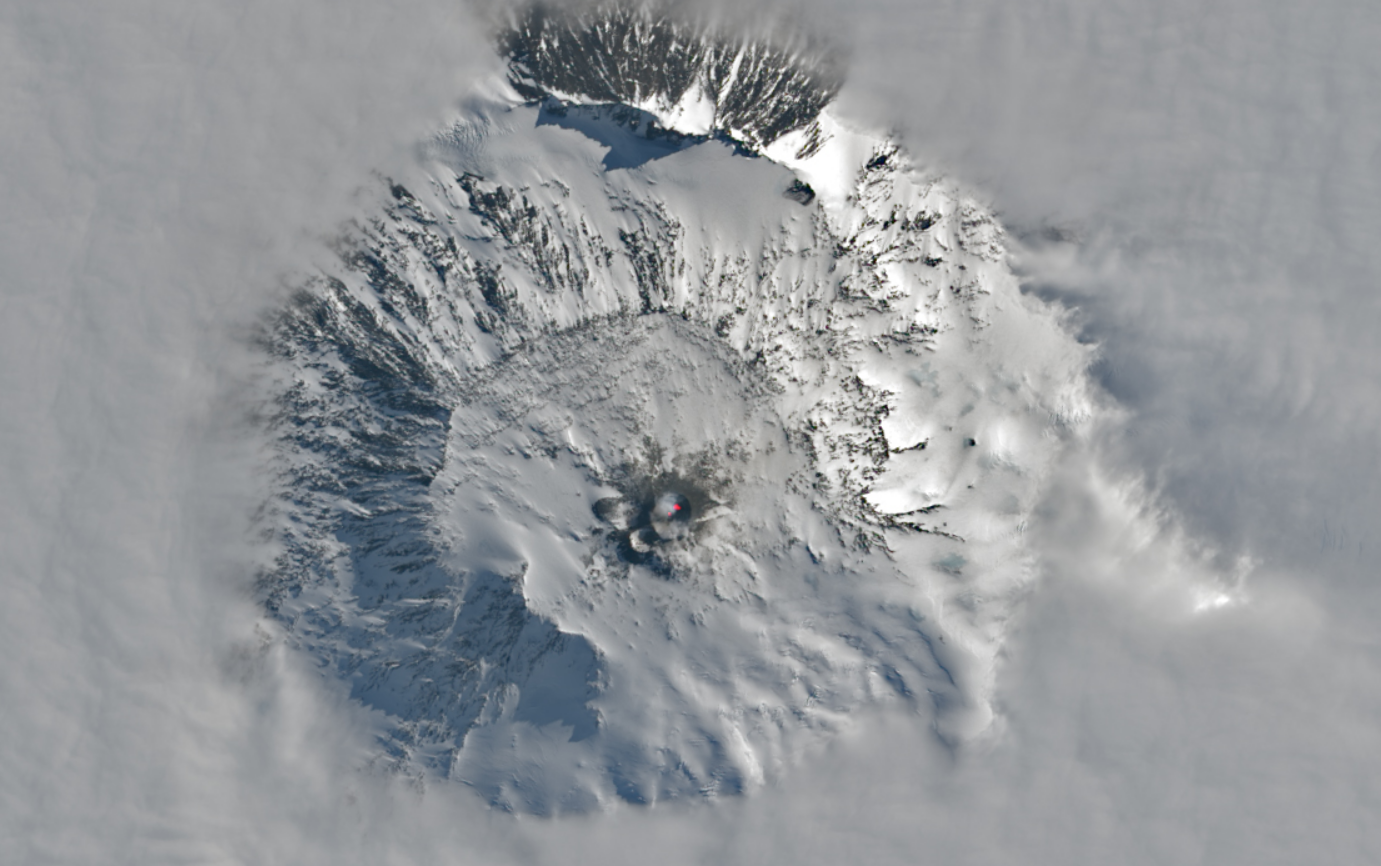Antarctica is an ice-capped continent with blistering cold temperatures, but it also harbors red-hot volcanic activity.
There are dozens of volcanoes in Antarctica, the majority of which are located in West Antarctica and Marie Byrd Land. One study in 2017 identified 138 volcanoes in this part of the continent alone. While most of these are dormant, eight or nine of the Antarctic volcanoes are regarded as active.
Just three volcanoes have even been seen erupting in recent history, although it was a different story in the distant past. Recent research gathered ice cores from Antarctica that suggested the continent was wracked by gigantic volcanic eruptions during the last ice age, many of which were larger than any eruption in modern history.
One of the most ferocious volcanoes on the continent is Mount Erebus, the tallest active volcano in Antarctica – with a summit elevation of 3,794 meters (12,448 feet) – and the southernmost active volcano on Earth.
Named after the personification of darkness in Greek mythology, it’s said Mount Erebus was erupting when Captain Sir James Clark Ross first set eyes upon it in 1841. It’s located alongside two other volcanoes on Ross Island, which was named after the aforementioned British explorer.

A satellite image of Mount Erebus breaking through the clouds of Antarctica on November 25, 2023.
Image credit: Landsat 9 — OLI-2/USGS
If you look closely at satellite images of this geological giant, you’ll notice slight hints of red in its summit crater. Remarkably, this is a searingly hot lava lake that’s been bubbling since at least 1972. The volcano regularly pumps out plumes of gas and steam. In past bouts of volcanic activity, it has been known to eject boulders of partially molten rock known as “volcanic bombs”.
Strangest of all, scientists have found that its gusts of gas are loaded with tiny crystals of metallic gold, no larger than 20 micrometers. Over the course of a single day, it’s estimated that the volcano spews out around 80 grams of gold – that’s worth around $6000.
The gold dust travels far and wide. Antarctic researchers have detected traces of the gold in ambient air up to 1,000 kilometers (621 miles) from the volcano.
The volcano is perhaps most notorious, however, for the Mount Erebus disaster. On November 28, 1979, Air New Zealand Flight 901 flew head-on into the side of the volcano, killing all 257 people onboard.
The flight was part of an Air New Zealand program that let passengers travel on an 11-hour sightseeing flight from Auckland to Antarctica and then back to New Zealand.
That fateful day in November 1979 was cloudy, but the aerial tour went ahead regardless. As reported by the BBC, pilot Captain Jim Collins attempted to descend the plane to about 610 meters (2,000 feet) by spiraling downwards in two large loops. During the maneuver, just before 1 pm, the plane smashed into the side of Mount Erebus and killed everyone on board, likely within an instant.
At the wreck site, rescue crews discovered some of the passengers’ cameras that still contained intact film. Their photos, some taken seconds before the impact, showed there was decent visibility at the time of the crash and the plane was well below the clouds, ruling out the possibility that the volcano was obscured by thick clouds.
Instead, it’s thought that a “whiteout” was responsible for the crash. The ice-covered volcano was effectively made invisible by flat light, which made it impossible to see against the backdrop of ice-caked ground and overcast skies. The pilot was unable to gauge any sense of distance and assumed the whiteout seen in front of the cockpit was ice and snow in the landscape below, not the face of a mountain.
After several costly lawsuits and heaps of controversy, Air New Zealand discontinued its sightseeing flyovers of Antarctica.
As the planet warms and Antarctica’s icy grip loosens, scientists are beginning to ponder the hidden consequences buried deep below the surface. Recent studies suggest that as climate change accelerates ice melt, the resulting reduction in pressure on Antarctica’s subterranean magma chambers could trigger eruptions. This phenomenon, observed in regions like West Antarctica, raises concerns about a potential feedback loop where volcanic activity further exacerbates ice loss, contributing to rising global sea levels
It’s a stark reminder that in Antarctica, even the forces beneath the ice are being stirred by the changing climate.
An earlier version of this article was published in April 2024.
Source Link: Gold Dust Spews Out Of The World's Most Southern Active Volcano In Antarctica